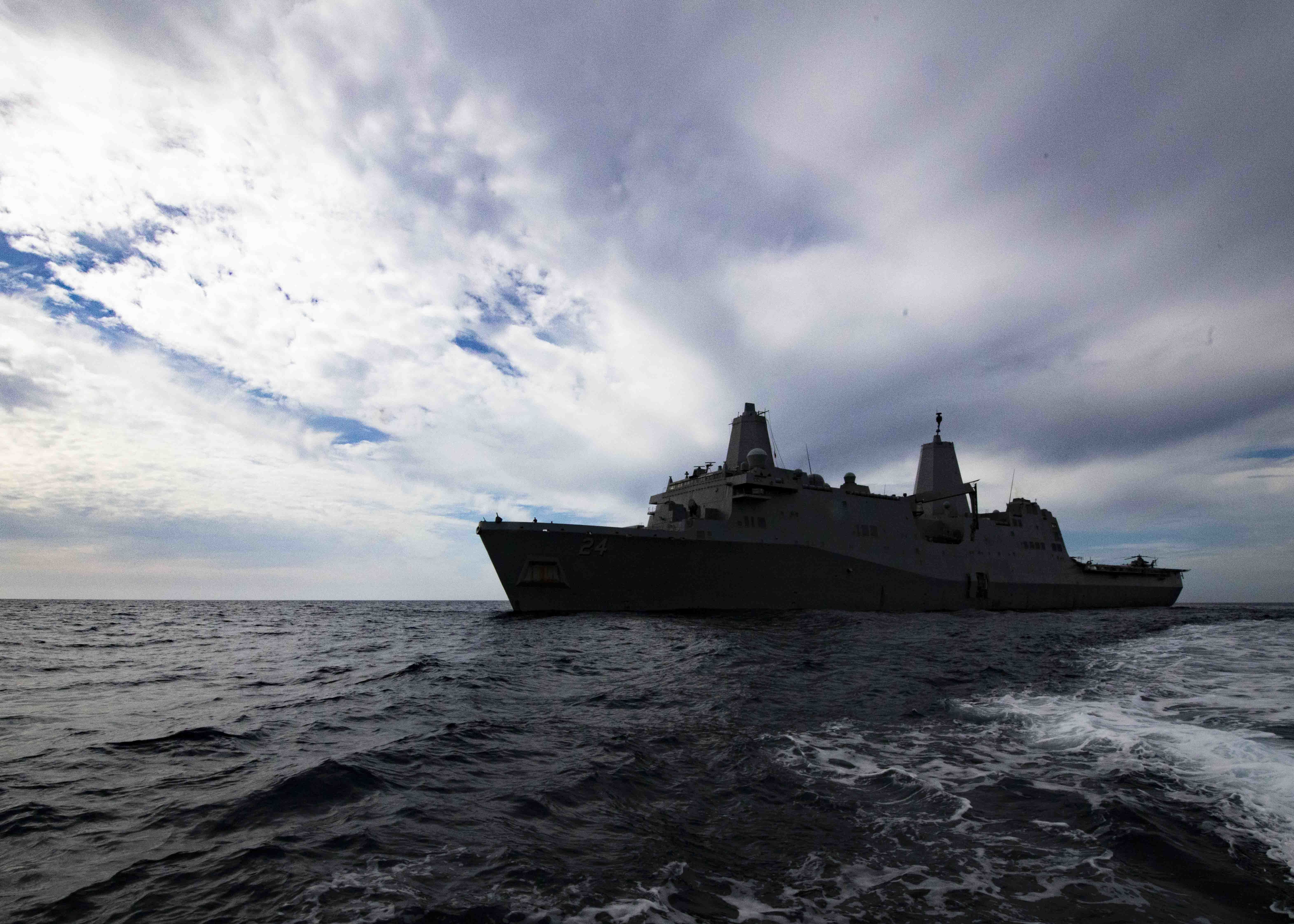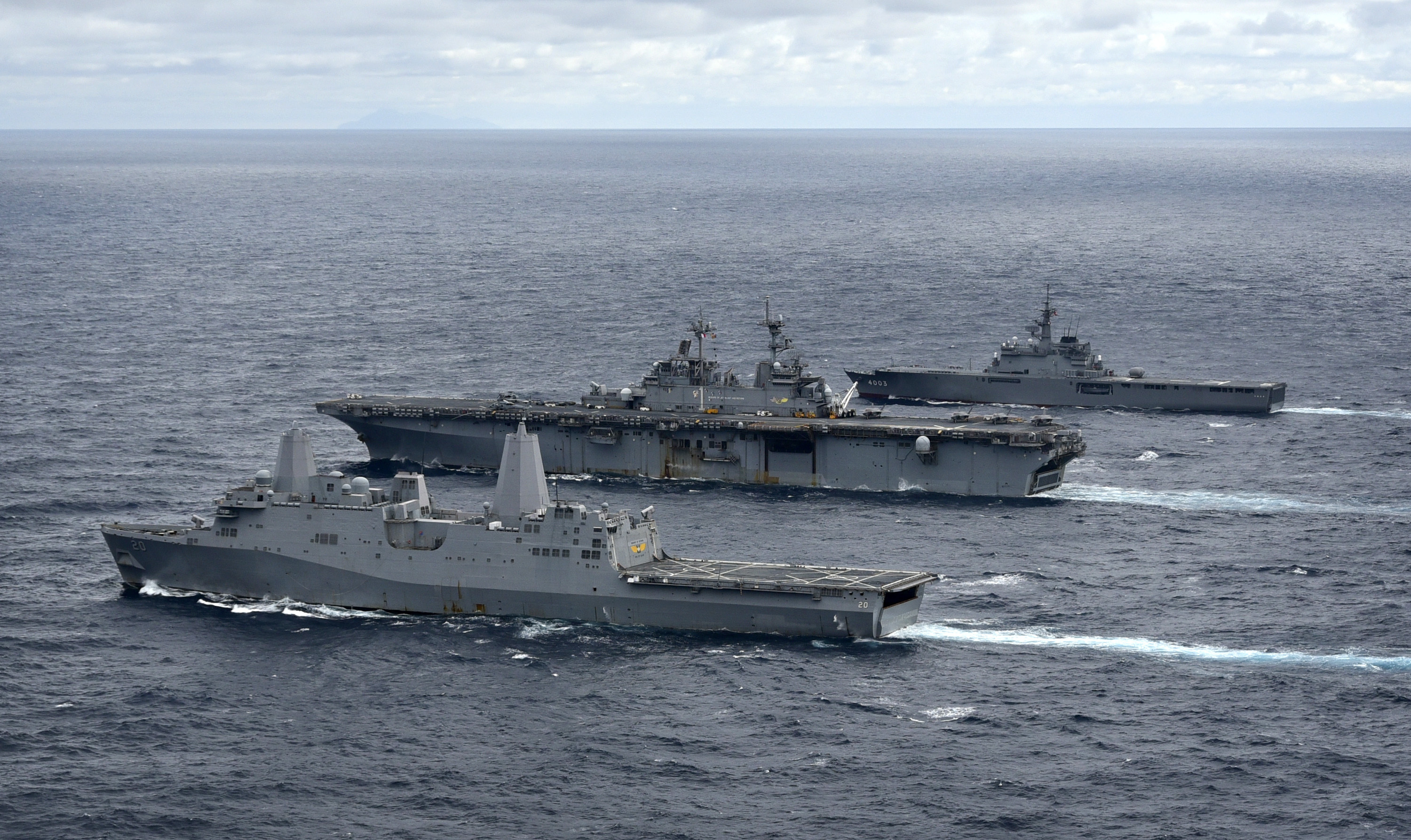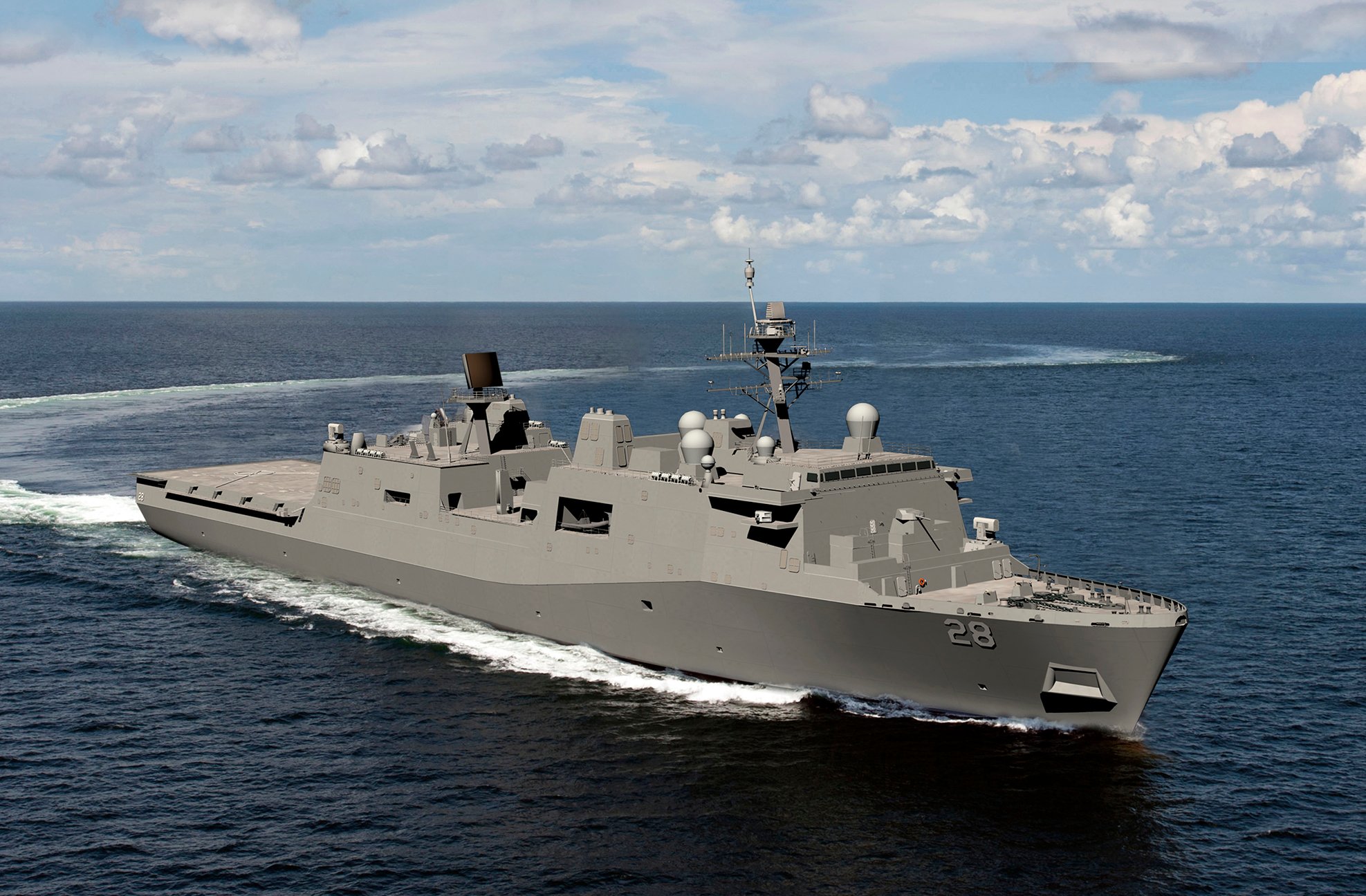
As the Navy looks to smaller and cheaper manned and unmanned ships to fill out its future fleet, a larger amphibious warship program is positioning itself to remain in shipbuilding plans by highlighting the ability to continue bringing costs down – including through a potential first-ever multi-ship buy – and adding capability.
The San Antonio-class amphibious transport docks (LPD-17) went from a troubled new program in the late 2000s to a ubiquitous part of the fleet today The program has moved to a second flight design that will replace the aging dock landing ships (LSD-41/49). But new Marine Corps and Navy operational plans emphasize small maneuvering units rather than a large forcible entry force, which has raised questions about whether the Navy would continue to invest in LPDs in the same numbers as before. The most recent long-range shipbuilding plan appears to hold the LPD fleet size steady but notes “amphibious ship force size/mix subject to on-going analysis.”
Steve Sloan, LPD program manager at Ingalls Shipbuilding, told USNI News last week that he was confident LPD would continue to have a place in future fleet plans, though he said it was more and more incumbent upon the shipbuilder to work with the Navy to drive costs even lower.
“The enduring need for lift is not going away. And the Navy’s 30-year shipbuilding plan … while it does have Light Amphibious Warship for [Distributed Maritime Operations] and [Expeditionary Advance Base Operations], does not squeeze out the lift requirements,” he said, noting that the plan shows LSDs retiring and continuing to be replaced by LPD Flight II ships.
“I know when I talk to people within the Navy, they’ve said the best thing that we can do is continue to work together to take cost down on the LPDs. We have been working with the Navy for years now to do that, starting back prior to LPD-28, and we are still finding ways working with the Navy customer to, without reducing warfighting capability, but find smarter, less expensive ways of doing some things that are taking the cost down, so that these large ships that are extraordinarily capable can still be part of the Navy’s toolkit with all the things that they bring to bear – because they’re going to need that lift, particularly in the Pacific.”
Though Ingalls may be seeking ways to take some cost out here and there in its processes, Sloan said the biggest thing the Navy, Ingalls and Congress could do is award a multi-ship contract, something that is done regularly for other ship classes but has never been done for the 15 LPDs put on contract to date.
Sloan said the Fiscal Year 2021 National Defense Authorization Act and the defense spending bill gave the Navy authority to enter into contacts for LPDs 32 and 33.
Tom Rivers, the executive director for amphibious, auxiliary and sealift programs at the Navy’s Program Executive Office for Ships, said last week that the service is considering a multi-ship buy for the next three LPDs – 32, 33 and 34 – and amphibious assault ship LHA-9. USNI News understands that this award, if executed, would not only bring down cost on the ships but could also speed up the timeline for acquiring the big-deck amphib, which is especially important in light of the loss of USS Bonhomme Richard (LHD-6) last year to a fire.

Sloan could not speculate on the potential cost-savings, saying he didn’t want to get ahead of the contract negotiation process, but he told USNI News that “one of the best and smartest things we think that the Navy and Congress could do would be to buy the LPDs in a group, much like they buy the destroyers today or like they’re procuring submarines today. And it just provides so much stability to the industrial base. We have so many small manufacturers who literally retool lines or even are contemplating whether to continue in government work, and for us to have the ability to give them an award of two or three ship sets of material at one time just provides so much stability.”
“In my personal opinion – with the carrier demand out there, with the Columbia submarine demand out there, with the Constellation-class (frigate) out there – the industrial base is not as strong as it was in the ‘80s, say, under the Reagan buildup. And having the ability to place those LPD material orders and get those out into industry and let those vendors plan for it and build and capitalize maybe in some cases for optimum production, it stabilizes them in so many ways,” he continued.
“It also enables us to plan effectively on building the ship at an optimum interval in the shipyard. We are grateful and pleased and proud and patriotic about building every LPD that we build, but when we get them one at a time as the award comes in from Congress, it’s not always on the most optimum construction timeline and schedule to get the most bang for every dollar, for every taxpayer dollar. And this is a brilliant move on the part of the Navy and Congress to bundle these ships together and give us the opportunity in some cases to bundle procurements with the big-deck amphib – we have a lot of common equipment, common suppliers – and really build on the most affordable intervals and to do it most affordably for the Navy.”
Rivers, during a panel presentation last week at the annual Surface Navy Association symposium, said “our focus right now is on executing the LPD/LHA multi-ship and economic order quantity strategy, leveraging the authorities and the appropriations given to us this year in the defense bills to maximize cost and schedule benefits while also providing more stability and production efficiency to our suppliers.”
Bundling three LPDs and an LHA “is one of our initiatives to bring that stability to the work base.”
Sloan said the current LPD production line is his main concern but that the topic of adding in new capabilities often comes up during talks with his Navy counterparts and his interactions with Ingalls Shipbuilding’s research and development group.

“The Navy is absolutely focused on other missions for LPDs. It’s a very flexible ship, it’s got more than 6,000 tons of payload and power-generation capability,” he said.
Without committing to any future decisions, which he said would be up to the Navy, Sloan said the LPD has four spots on its flight deck and could therefore do a lot with unmanned aerial vehicles. Upgrades to cyber and network capabilities on Flight II would make the new ships even more able to control unmanned systems operations – which could include launching unmanned surface vessels or unmanned underwater vessels out of the amphib’s well deck.
“You see an LPD out steaming around, and no one has any idea that you could have USVs or UUVs in the well deck and launch them,” Sloan said.
Additionally, “the LPD hull form, our R&D group tells me, is one of only two ships in the inventory that can carry a hypersonic missile right now – the DDG-1000 being the other one.” He added that USS Portland (LPD-27) is currently testing a laser weapon system.
“The LPD can rapidly field a lot of advanced technologies, and we definitely continue to engage the Navy customer and the Marines on enhancements they’d like to see and capabilities they’d like to see in the LPD platform,” Sloan said.
Ingalls has delivered 11 LPDs to date. Three are under construction at the Mississippi yard, and another is on contract.
Fort Lauderdale (LPD-28) launched in March and recently completed a generator lightoff and a combat systems lightoff in late 2020, Sloan said. The ship will go through more testing and activation ahead of trials sometime later in 2021.
Richard McCool (LPD-29) is more than 75-percent erected. The ship will be fully erected and welded by the end of 2021 and will launch about a year from now, he said.
Harrisburg (LPD-30), which will be the first Flight II ship, had its keel laid and continues to have more units built and stacked on the keel.

Sloan said Flight II “maintains the warfighting and lift capabilities from the Flight I but also has enhanced capabilities,” including: the ability to embark the Marines’ new CH-53K King Stallion heavy lift helicopter; the Raytheon Enterprise Air Surveillance Radar (EASR) radar; the Consolidated Afloat Networks and Enterprise Services (CANES) system; a modified bridge arrangement based on lessons learned from the 2017 destroyer collisions in the Pacific; improved small boat handling; an improved combat system in Ship Self Defense System (SSDS) Technical Insertion 2016; and more.
Sloan said some of the improvements will be backfit into Flight I ships, but “the Flight II represents enhancements in many areas of warfighting for the sailors and the Marines.”
In April, Ingalls was awarded a $1.5-billion contract for LPD-31, and Sloan said the majority of material orders have already been placed.





